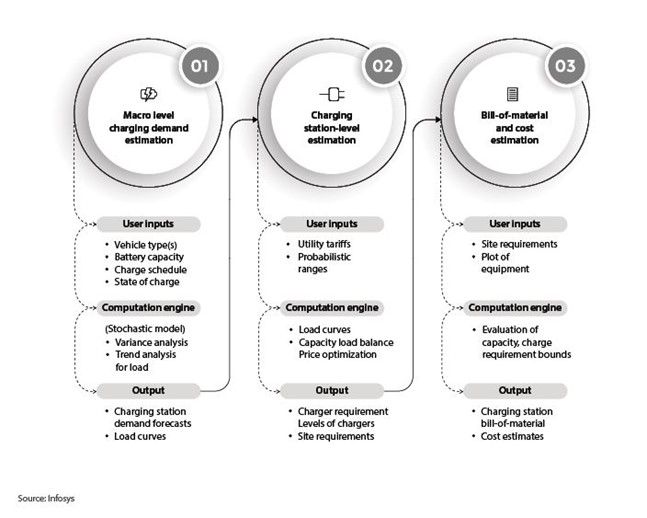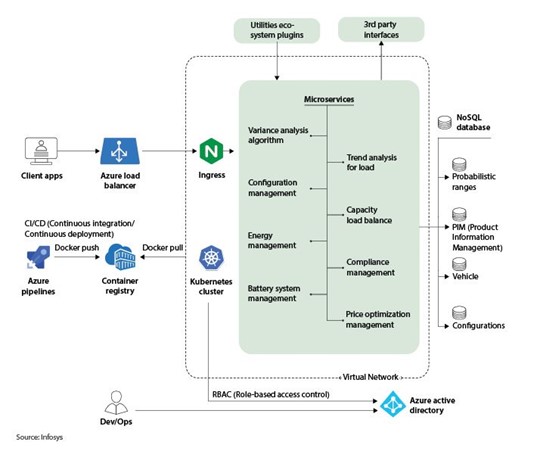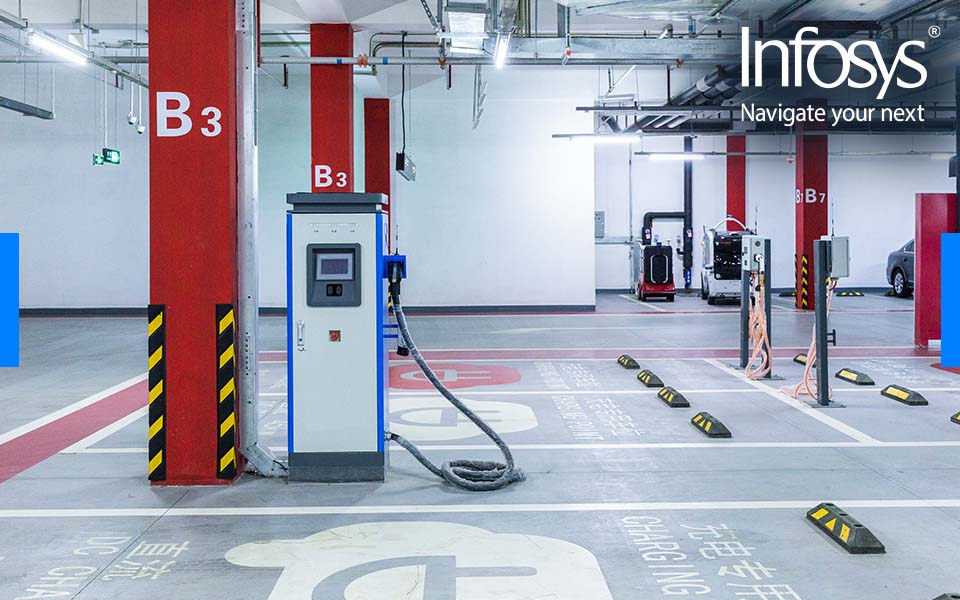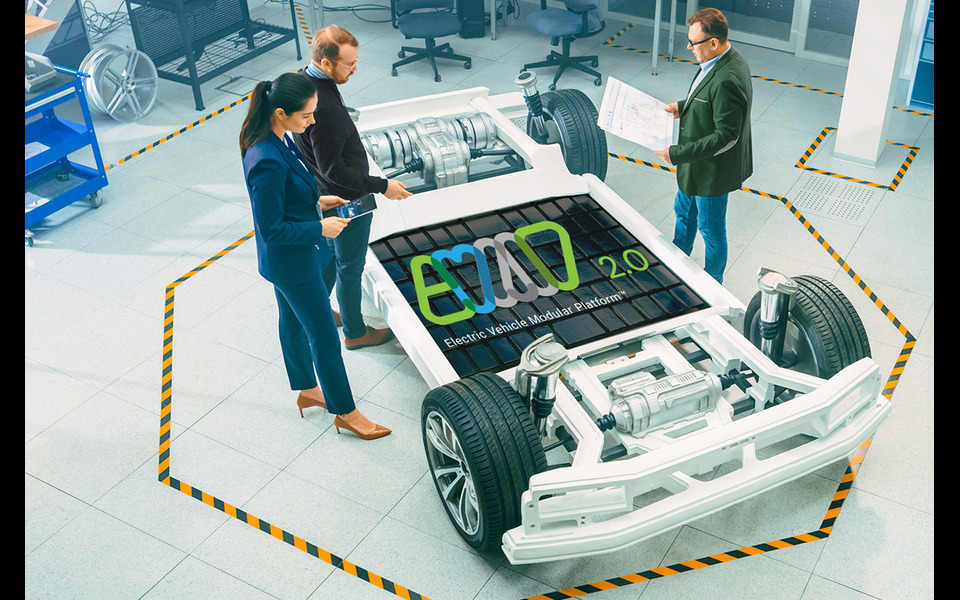Inadequate charging infrastructure remains a major adoption barrier for electric vehicles (EVs). Diversity in terms of technology, architecture, number of chargers and their varieties, connectors, charging methods, and then significant investments and planning for each configuration, add to complexities in setting up charging stations. An effective configurator platform offers an optimal configuration of EV charging stations with accurate cost and price estimates.
Several governments have announced their target years to completely switch to EVs and stop manufacturing internal combustion engine (ICE) driven vehicles. For instance, the US targets 50% of new vehicle sales as zero-emission or multiple types of EVs by 2030, while California intends to ban the sale of new gasoline cars by 2035.
What is hampering the wider take up of EVs? It is range anxiety and their high price, driven by scarce commodities necessary to make batteries, their unethical mining from conflict areas, and supply chain challenges.
Batteries are the most expensive part of EVs because they need rare earth materials such as nickel, cobalt, and lithium for manufacturing. However, the evolution of solid-state batteries, alternative affordable materials, and other such developments will eventually lead to price parity between EVs and ICE vehicles by 2026, according to several experts.1
Battery prices have declined in the past decade. Inflation-adjusted prices for car battery packs fell from $1,200 per kWh in 2010 to $132 in 2021. Bloomberg’s estimate for EV price parity is $80/kWh in the US and Europe.2 Another way to reduce cost is battery decoupling, where batteries are swapped or offered separately on a subscription basis, with a usage-based fee. Battery swapping avoids the waiting time for charging. However, it faces interoperability challenges between different vehicle makers.
“A charging station configuration platform is a decision tool to assess multiple options and recommend the best possible configuration”
From an infrastructure perspective, the patchy availability of charging stations is the reason for range anxiety. The challenge in setting up charging stations is the initial investment and the diversity in their standards. However, governments worldwide have started taking measures to plug this gap. The US government announced a $5 billion fund for states to create the required infrastructure. Countries in the European Union have announced incentives to promote the setup of both residential and commercial charging stations.
A charging station setup needs the following considerations: number of charging points, mix of ports, charging level (from 1 to 4, based on charging speed), power source (renewable vs. traditional, grid vs. local), and pricing. A charging station configurator platform (CSCP) optimizes the charging station configuration and accurately estimates the final cost. It is a decision tool for users to simulate and assess multiple configurations, their predicted specifications and costs, and accordingly recommend the best option.
Market size for charging stations
The appetite for charging station investments directly correlates with the EV adoption rate and the utilization of public stations. Level 1 and 2 charging stations are for domestic and commercial applications, while level 3 and 4 are fast charging stations.3 According to PwC, for an average utilization of 10% of charging stations and 5% of EV adoption, US will need 235,000 charging stations by 2030.4 However, if EV users mostly use their home or workplace charging stations, level 3 and 4 charging station operators are prone to low utilization risks, and, in turn, low returns.
At a macro level, the number of charging stations, their category, location, and ability to scale up are important. Once these inputs are decided, CSCP optimizes individual charging station specifications at a micro level.
Challenges in setting up charging stations
Several challenges come up in setting up an EV charging station - huge investments, lack of standards for interoperability between multiple vehicles, accurate demand forecasting, etc. All these together translate into capacity utilization, grid load, and charging time, leading to queue management at a station.
Business models that charge on a usage-basis or charging station-as-a-service (CaaS), do not require high investments at the initial stage. The US Department of Energy, for example, funded a study to explore the cost of non-residential EV charging stations. The installation cost varied from site to site, from $4,000 to $51,000 for single port charging station, for the fast-charging option.5 Also, a CSCP resolves investment and load forecasting challenges with accurate cost and demand estimates.
On the interoperability standards side, EV charging station infrastructure should follow geo-specific standards, regulations, and compliance requirements. The evolving standards, connector types, and multiple ecosystem players in the EV space add to challenges in setting up EV charging stations.
The selection of the most optimized combination of connector types, chargers, and charge management platforms requires due diligence before investments. Digitization, internet of things, and cloud for connected technology streams align with the EV ecosystem to empower customers for efficient EV usage. This requires EV charging stations to stay optimally connected from its source, ie, from grids to end consumers.
CSCP aims to address these challenges through a service platform approach, where it analyzes core requirements for the most optimal recommended recipe. It leverages algorithms to assess a suitable charger for a particular use case that encompasses hardware and software elements. It houses a set of libraries to precisely estimate cost and suggested bill-of-material to set up cost-effective charging stations.
At a macro level, the number of charging stations, their category, location, and ability to scale up are important. Once these inputs are decided, CSCP optimizes individual charging station specifications at a micro level.
Challenges in setting up charging stations
Several challenges come up in setting up an EV charging station - huge investments, lack of standards for interoperability between multiple vehicles, accurate demand forecasting, etc. All these together translate into capacity utilization, grid load, and charging time, leading to queue management at a station.
Business models that charge on a usage-basis or charging station-as-a-service (CaaS), do not require high investments at the initial stage. The US Department of Energy, for example, funded a study to explore the cost of non-residential EV charging stations. The installation cost varied from site to site, from $4,000 to $51,000 for single port charging station, for the fast-charging option.5 Also, a CSCP resolves investment and load forecasting challenges with accurate cost and demand estimates.
On the interoperability standards side, EV charging station infrastructure should follow geo-specific standards, regulations, and compliance requirements. The evolving standards, connector types, and multiple ecosystem players in the EV space add to challenges in setting up EV charging stations.
The selection of the most optimized combination of connector types, chargers, and charge management platforms requires due diligence before investments. Digitization, internet of things, and cloud for connected technology streams align with the EV ecosystem to empower customers for efficient EV usage. This requires EV charging stations to stay optimally connected from its source, ie, from grids to end consumers.
CSCP aims to address these challenges through a service platform approach, where it analyzes core requirements for the most optimal recommended recipe. It leverages algorithms to assess a suitable charger for a particular use case that encompasses hardware and software elements. It houses a set of libraries to precisely estimate cost and suggested bill-of-material to set up cost-effective charging stations.
Figure 1. The process for charging station demand estimation and design

Step 1: Macro level charging demand estimation - It involves the feed of expected vehicle types, the number of vehicles, arrival patterns, charging type and duration, charging cycles, and battery capacity as input. Probabilistic and statistical models with stochastics and safety factors derive complex load curves as an output.
Step 2: Charging station design - Utility tariffs vary by time of day, capacity, available concessions, zero-emission credits, etc. An in-depth capacity load balance calculation is performed to optimize the site and charger requirements, including the type of chargers (Level 1, 2, 3, 4) and connector types. As this is an energy-heavy offering, another dimension to consider is sustainability. Organizations increasingly take measures to maximize their usage of renewable energy sources to support sustainability.
Energy management is a crucial module to contain the cost of a charging station operation. It decides the battery capacity required to draw power during lean cost tariff periods and utilizes them for charging during prime time at higher prices.
Step 3: Bill-of-material (or BOM) - Multidimensional optimization is performed to finally derive a BOM, configuration considerations, cost over a period, and other bounds. BOM contains charger types and quantities, secondary transformers, secondary circuit breakers, battery storage systems, etc.
On the compliance dimensions, the Americans with Disabilities Act (ADA) is a federal civil rights law that prohibits discrimination in public places against individuals with disabilities.6 This is taken care of in site configuration. While designing ADA-compliant charging stations, it is essential to consider accessibility, ease of use, and safety for disabled drivers, including those using wheelchairs or other assistive equipment. Key considerations include adequate space for entering and exiting of vehicles, unobstructed access to charging stations, free movement around charging stations, clear connection points on vehicles, and clear paths and proximity to any building entrances.
Further, an attractive pricing strategy for charging will lead to more developments. An optimal pricing tier should be derived based on competition, user profiles, charging types, and charge levels. CSCP guides businesses to make the right scalable and economically viable charging station business model.
A high-level architecture
CSCP is a complex solution with multiple large mathematical models running in numerous cycles. The solution seamlessly simulates many submodules like energy management, battery system management, cost optimization, and demand-supply orchestration. These submodules are specialized, analytical, and resource-intensive on their own. They might be owned by different specialists, outside organizations, or product vendors to bring the best of breeds to the overall solution.
Figure 2 represents an Azure-based high-level architecture of the CSCP platform.
Figure 2. High-level architecture for the CSCP platform

This platform involves a cloud-native microservices-based architecture. It promotes modularity and provides necessary updates on submodules for each release without impacting the overall solution. A strong DevSecOps supports large releases with automated testing and release processes. The solution is user-friendly and intuitive, accommodating different user journeys to maintain ease of use. Other platforms such as AWS and GCP can also be used to build an equivalent architecture.
CaaS for charging business
Traditional businesses with assets such as real estate are eager to enter the EV industry. They offer their land in key locations to set up charging stations and the associated infrastructure such as retail stores. Shell for example provides charging stations on a turnkey basis with its “Recharge Solutions” program.7 Charging station operators sign up with Shell without any upfront capital investment. For companies interested in the charging station business but cannot make high capital investments, CaaS is an available option.
However, more EVs on roads imply higher grid load. Further, geo-political issues like the ongoing Ukraine war will keep the power cost (and thus the EV charging cost) elevated for some time.
That said, charging stations are the last mile in the EV infrastructure and play a key role in overall accomplishment. CSCP simplifies complex processes such as configuration design and cost estimation to help charging station operators decide on pay-per-use charges and establish a profitable and sustainable business. Charging stations should closely monitor charging time, charging type, and the right proportion of renewable energy to keep charging costs and grid loads at reasonable levels to achieve the desired success.
“A cloud-native, microservices-based architecture for the configurator promotes modularity for the platform”
A powerful charging station configurator handles hundreds of options and thousands of combinations, with the ability to identify valid variants correctly and quickly. However, parameter values must satisfy several rules describing interdependencies between them. These rules come from different sources such as legal regulations, product availability, power conditions, and marketing. CSCP simplifies these complications and guides users to find a combination of the parameter values that satisfy all rules toward a goal like optimized power usage or the least cost of charging station setup and operations.
References
1. The road to an EV future still has a few potholes, Luiz Avelar, Jan 31, 2022, World Economic Forum.
2. Hyperdrive daily: The EV price gap narrows, Colin McKerracher, May 25, 2021, Bloomberg.
3. Developing infrastructure to charge electric vehicles, U.S. Department of Energy.
4. Electric vehicles and the charging infrastructure: A new mindset? Ray Telang, Hugh LE, and Akshay Singh, PwC.
5. Non-residential electric vehicle charging station costs range from $300-$1,500 for level 1 chargers, $400-$6,500 for level 2 chargers, and $10,000 ,$40,000 for DC fast chargers, 26th March 2019, U.S. Department of Transportation.
6. Charging infrastructure procurement and installation, Alternative Fuels Data Center.
7. Turnkey EV charging solutions, Shell.
Authors
Originally published at Infosys Knowledge Institute | Charging Station Configurator for Electric Vehicles




































